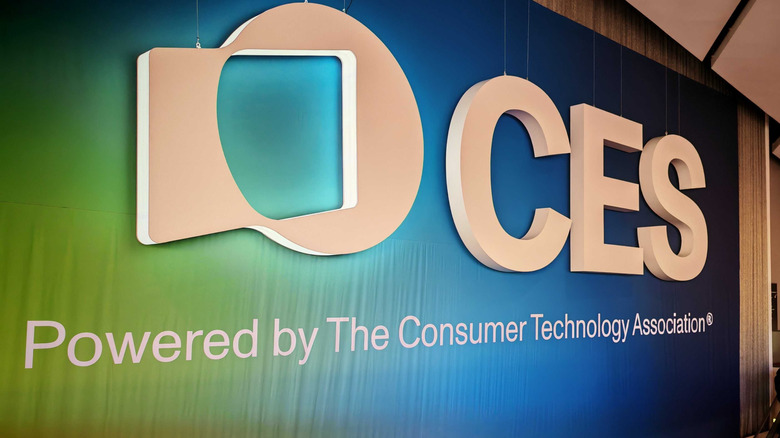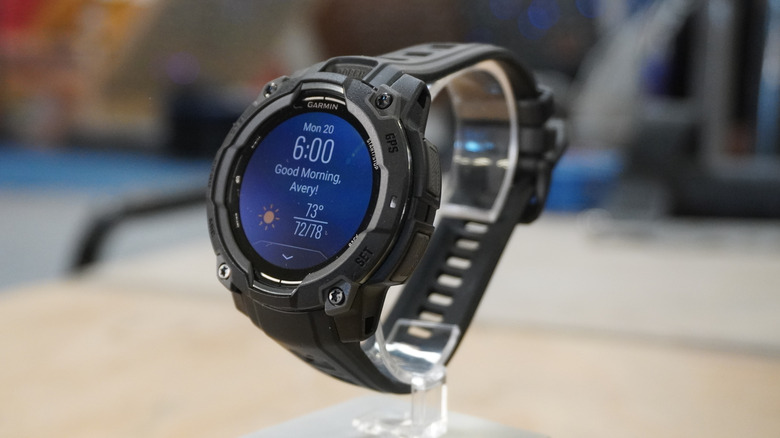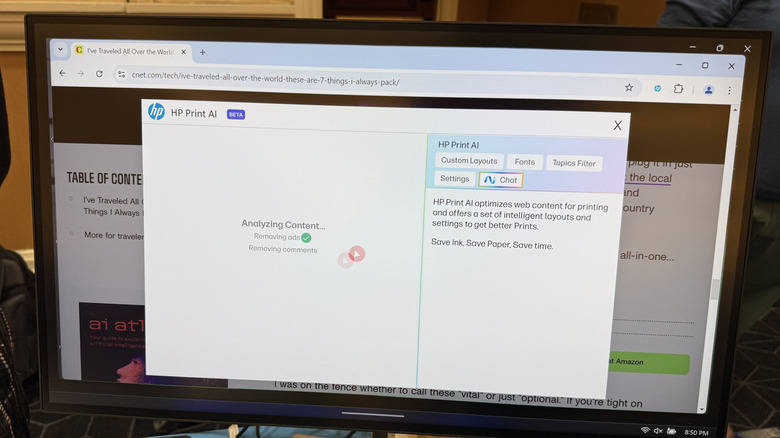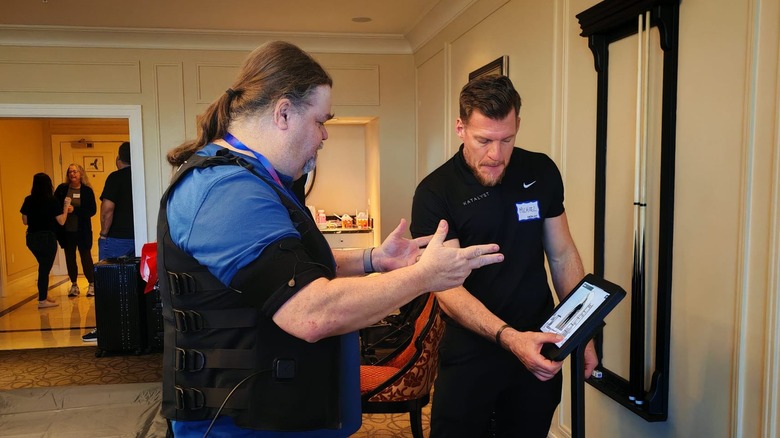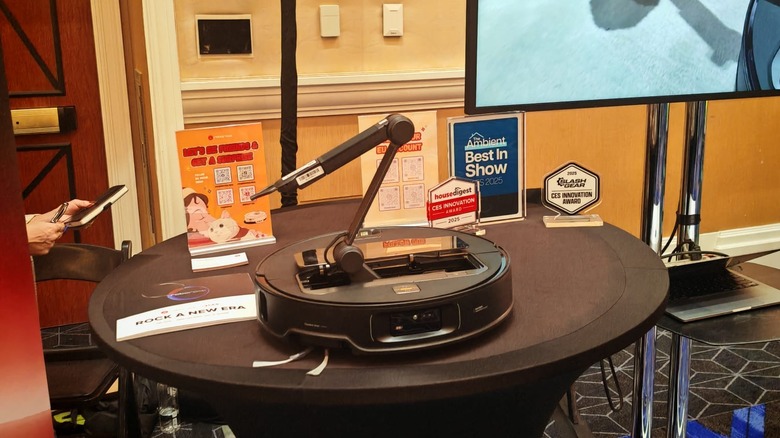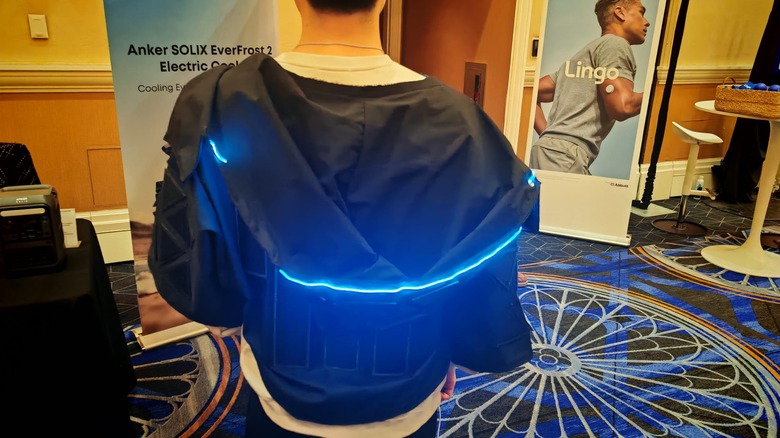CES 2025 Day 0: The Crazy Before The Storm
The consumer electronics show in Las Vegas, Nevada is here and officially starts on January 7th. But that didn't stop thousands of media, analysts, and exhibitors from putting on a show in the two days leading up to the big event. Before the show floor even opened, we found ourselves jumping from hotel to hotel and ballroom to meeting room to find the most interesting tech that will grace our lives this year.
Before long, we were neck deep in technology — some of which could be game-changing, and some of which is just fun. We saw a robot vacuum that can pick up after your messy kids. Would you like a smartwatch with infinite battery life? Garmin has a solution for you. How about a puppy that can help take care of someone who can't have a dog? We saw all this and more, and it's gotten us psyched for what's to come.
Jennie, your robot puppy
Eldercare is a fast-emerging market, and Tombot has built a puppy for those who can't otherwise have a puppy. Jennie is an animatronic puppy that is designed to react with its owner. They can talk to it, and the directional microphones will detect where a voice is coming from and look in that direction. When you pet it, it will react to the petting.
Jennie is not designed to walk around. It spends its time lying in bed or on your lap — pretty much like every dog I've ever cared for. It's not designed to get up and walk around because doing so can become a tripping hazard. But everything else a puppy can do, this puppy does.
The puppy is uncannily realistic, but not in a bad way. Tombot worked with Jim Henson's creature shop and over 700 dementia patients to work out the preferences for the material and demeanor and the result is a puppy that looks remarkably realistic and is quite reactive to its emotional support humans.
Garmin's advanced Instincts
Garmin introduced a trio of new smartwatches to its Instinct lineup. The first is the Instinct 3 AMOLED. The Garmin Instinct line is known for its durability and lost-lasting battery life. Garmin added an AMOLED screen to the instinct that gets very nice and bright. Speaking of brightness, Garmin also added its LED flashlight to this watch, which is a nice addition. The AMOLED panel is not a touch screen — you navigate your Instinct smartwatch by using the five buttons around the outside of the bezel. To be honest, it's a little weird having an AMOLED smartwatch that isn't a touch screen, but if you're familiar with the Instinct watch, it won't feel too weird.
The second watch Garmin added was the Instinct 3 Solar. This smartwatch has a theoretical "unlimited battery life" because of the solar panels on the face of the watch. These solar panels provide up to five times more power than the previous generation solar, so it's possible Garmin's claims may be true. That being said, having tested the Instinct Solar 2, which Garmin also said could have unlimited battery life, I maxed out at about forty days. It's true that 40 days is impressive battery life for a smartwatch, but it's also not unlimited.
Garmin added one more watch to the lineup, the Instinct E. This is basically the equivalent of the FE line of Samsung smartphones — it's a less expensive variant without some of the features that make the top-of-the-line watches expensive.
HP Print AI -- printers don't suck anymore
In the world of technology there is one stalwart frustration that despite decades of advancement remains a point of frustration to this day — printers. Let's face it, printers suck.
HP wants to change ... some of that, by introducing AI into the printer process. Before you groan and click away, hear us out — this is cool. HP is rolling out Print AI. As it exists today, Print AI is a separate piece of software you install, such as a browser extension, which examines the document you want to print, and cuts out all the extra stuff.
Say you want to print an article from a news website, but you don't want to waste ink on the ads. HP Print AI will remove the ads for you. If you want to print a recipe for a dish you want to cook, Print AI will proactively remove all the fluff that goes along with such recipes like comments on the article, leaving you with just the actual information you want on paper. It does all of this without being told to — the AI does the work for you.
Today, Print AI is a software extension, but by this fall, HP thinks it will be built into the driver software, making printers actually not suck. Or it'll be another part of the printer to break. Time will tell, but we definitely award HP with an A for effort.
Shocking your way to fitness
Getting shocked is usually a pretty bad thing. But what if instead of ending up with an injury afterwards, you wound up with the body of a Greek god. That's the logic behind Katalyst, a shocker of an exercise system that jolts you into shape.
Katalyst is similar to those zappy things people used to attach to their abs in 1990s infomercials. However, unlike the old ab zappers, this system apparently works: The Electro Muscle Stimulation or EMS causes your muscles to tense and creates resistance for you to work against. As the pads cover most of your body, you end up working nearly every muscle group. Katalyst claims it could be of particular use to people with a limited range of motion or who are recovering from injuries.
The downside: The system is pretty expensive. You're looking at North of $2000 for the base unit, plus around $50 a month in subscription fees. Balancing that out is the fact they'll send you a new unit for free if you get jacked to the point the old one doesn't fit. That older one can then be handed to a skinnier friend or relative, as they don't want your sweaty vest mailing back.
The robot vacuums are sprouting limbs
Robot vacuums have gotten very good over the last few years. Various sensors, AI, and cloud connectivity means most of them can spot pet mess, map your house, dodge hazards, clean in the corners, and find their way back to base when they need charging or emptying.
So, where do manufacturers go next? Well, they add capability. A few months ago, we saw Dreame debut a vacuum that could climb a set of (admittedly small) stairs. Now Roborock has gone and given one a functional arm.
The arm can lift around half a pound, enough to clear tissues, socks, other small items of clothing and general debris. Obviously these are the first steps, but it could be a good indicator of where future robot vacuum capabilities are heading. They'll be able to pick up general trash, then vacuum, then mop afterwards–a full, deep clean.
If you're a pessimist, you may also expect them to be climbing full sized staircases then coming at you with a knife gripped in that terrifying death claw on the day the robots inevitably rise up. But that's probably not hitting the show floor until CES 2032.
Anker almost completes the outfit
Back at IFA, I stumbled across a solar sun hat that looked pretty ridiculous but was unique enough to warrant a mention. That was followed up by a full-blown review, where the EcoFlow Power Hat proved to be oddly practical. Now that CES has come around, and the PowerHat is not unique anymore, another company has hopped on the wearable solar bandwagon.
Anker, or more specifically its subsidiary Solix, has a full-on solar jacket. The same principle applies, it's an item of clothing with solar panels stitched to it and a USB cord literally on hand so you can plug in a device or power bank.
The 30-watt output is more than you get from EcoFlow's headgear, but the jacket admittedly has more surface area. However, you'll need to put the hood up if you want to get anywhere close to achieving that, which means you can't have a solar hat and Solix jacket running at full pelt at the same time. Still, the jacket is launching this summer along with a parasol that can produce 100 watts of energy in ideal conditions. We're all just waiting for some pants and boots so we can complete our solar outfit; looking at you, Jackery and UGreen.
